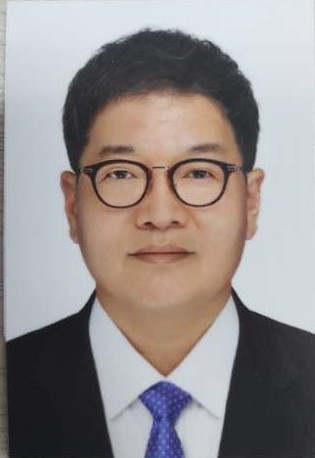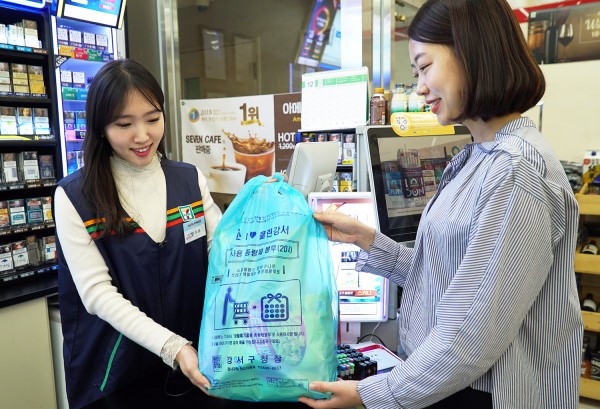

21/12/2020
Recently, the Ministry of Natural Resources and Environment (MONRE) submitted to the National Assembly the Draft Law on Environmental Protection (LEP) (amended), which proposed a plan to collect waste fees by volume, instead of the current average household collection plan. The proposal has received many multidimensional opinions showing the interest of the whole society for the work of environmental protection. In order to better understand this proposal, the Vietnam Environment Administration Magazine (VEM) has made an interview with Mr. Shon Dong Yeoub - Chief Representative of the Korea Environmental Industry and Technology Institute (KEITI) in Việt Nam on Korea's experience in charging waste by volume (and by type of waste) which has been applied for a decade.

Dr. Shon Dong Yeoub - Chief Representative of Korea Environmental Industry and Technology (KEITI) in Việt Nam
VEM: Could you tell us the situation of the collection, transportation and waste treatment in Korea?
Mr. Shon Dong Yeoub: Waste treatment in Korea is basically carried out through the volume-based waste fee system (VBWFS). In addition, with the tool of extended producer responsibility (EPR), which requires manufacturers to reduce waste, promote recycling and reuse, we are working hard to build up a socio-economic institution with a model of resource circulation.
Like many developing countries, Korea's waste disposal is largely dependent on the landfilling before the implementation of the system VBWFS. In 2017, the rate of the landfill of household and business came to 8.3%, 6.1% were incinerated, 85.4% were reused and 0.2% were discharged to the sea.
In 1994, before the implementation of the volume-based waste fee system, the level of emissions per capita in Korea was 1.3kg/person/day, after applying this policy, the emission level dropped sharply. Since 1997, the average discharge per capita is from 0.94kg - 1.05kg/person/day and this level of emissions has been maintained. Compared to the average emissions of the Organization for Economic Co-operation and Development (OEDC) countries (1.425kg/person/day in 2015), the emission level of Korea is relatively low.
VEM: How the application of economic instruments in waste management policy is implemented in Korea?
Mr. Shon Dong Yeoub: Before collecting waste fee by volume, in Korea, waste fee was collected by area, partly by weight and volume. For example, in Seoul, the waste bags in districts are divided by bags for households and businesses, and also divided into volumes of 2 liters, 3 liters, 5 liters, 10 liters, 20 liters, 30 liters, 50 liters, 75 liters, 100 liters. Citizens can buy all kinds of garbage bags by size at designated locations such as convenience stores, large supermarkets, laundry shops..., put garbage in the prescribed places and it will be collected.
For large-sized waste items, such as household appliances, people can buy a waste label/stamp at the district committee, paste it on the waste and then discard it or use large-scale waste collection facilities.
Reporter: What are the advantages as well as challenges when applying the Korean’s VBWFS, sir?
Mr. Shon Dong Yeoub: The VBWFS is an effective tool that was designed to collect waste fee from people according to the waste proportion which they generate. Therefore, the advantage of this method is to encourage people to voluntarily reduce the amount of waste.
For recyclable waste, it will be classified and people don’t have to pay any fee, so it helps encourage waste separation and reuse in the community. Reducing the amount of waste and sorting recyclable waste not only decreases the fee for the citizens but also helps waste management agencies reduce their reliance on incineration facilities or landfills.
The effort to change the way people dispose of their waste through a public awareness campaign are methods that do not pressure people but it is difficult to achieve the desired effect and take a lot of time. While the use of Government-sanctioned measures require a workforce to control and large investments in both funding and manpower. In addition to the achieved results, the VBWFS in Korea has encountered the following difficulties:
Most garbage bags are full of food waste, so there are many environmental problems such as odors or the appearance of flies and bugs at the incineration or landfill sites. This caused discontent for the surrounding people.
Moreover, the VBWFS has put localities to face a rapid increase in recycling resources. Recycled products are classified but there is no market, so backlog often happens.
In addition, localities have also challenges in expanding their facilities and for treating food waste by incineration and landfill. Meanwhile, the use of incineration and landfill services built by private is costly.
VEM: Currently the MONRE is collecting opinions to complete the Draft LEP (amended), which has proposed a plan to collect waste fees by volume, instead of the current plan of collecting average fee per household... So, could you share your experience to implement this policy in Việt Nam?
Mr. Shon Dong Yeoub: In order to effectively implement the VBWFS, it is necessary to list the problems that may occur during the implementation process and prepare in advance plans to deal with those problems.
Việt Nam, depending on the specific local situation, Việt Nam should develop scenarios and plans to handle the consumption of reusable products to be collected, processed food waste and its smell, preventing illegal littering, and calling for cooperation of the people and society while implementing this mechanism.
As far as I know, in 2012, Việt Nam issued the National Strategy on Environmental Pprotection toward 2020, vision to 2030 (NSEP), which mention on researching, testing and gradually applying on a large scale the waste fee collection by volume and by type of waste, solid waste. In addition, the Strategy also identifies step by step raising the fee levels, which is sufficient to cover the costs of solid waste collection, transportation and landfill; form a recyclable and reusable waste market.
Along with that, the Draft LEP (amended) was built at the right time to evaluate the achieved results of the NSEP and base on that, raising appropriate amendments and supplements to complete the LEP as well as develop a Strategy on Environmental Protection for the next period. With such a good preparation, I believe that Việt Nam will overcome the above-mentioned difficulties and achieve the desired results when implementing VBWFS.

In Korea, people can easily buy waste bags at the supermarkets
VEM: In your opinion, in order to apply this policy, what conditions does Việt Nam need to effectively handle waste both economically and environmentally?
Mr. Shon Dong Yeoub: According to the statistics in South Korea, after starting to apply the VBWFS in two years, the proportion of waste generated was reduced by 11%, the waste reuse was increased by 9% compared with the absence of this tool.
The VBWFS is an incentive method to help reduce the waste volume as well as the burden on the environment. To effectively implement this mechanism in Việt Nam, it is crucial to develop suitable policies to apply efficiently to each region and each locality, considering specific feature of them.
In addition, promoting propaganda and encouraging the active implementation of civil society are also necessary.
VEM: Thank you!
Phạm Đình (Implemented)
|
Dr. Shon Dong Yeoub has started his mission of as Chief Representative of the Korea Environmental Industry and Technology (KEITI) in Việt Nam since January 2020. KEITI is an Institute under the Ministry of Environment of Korea specializing in assisting enterprises in developing and introducing Korea's advanced and environmentally friendly technologies and sharing policy information on waste treatment, developing standards on air quality, water quality... those issues are very interested in Việt Nam. At the same time, it is a bridge to help develop the cooperative relationship between Việt Nam and Korea, connecting businesses of the two countries in the field of environment. |